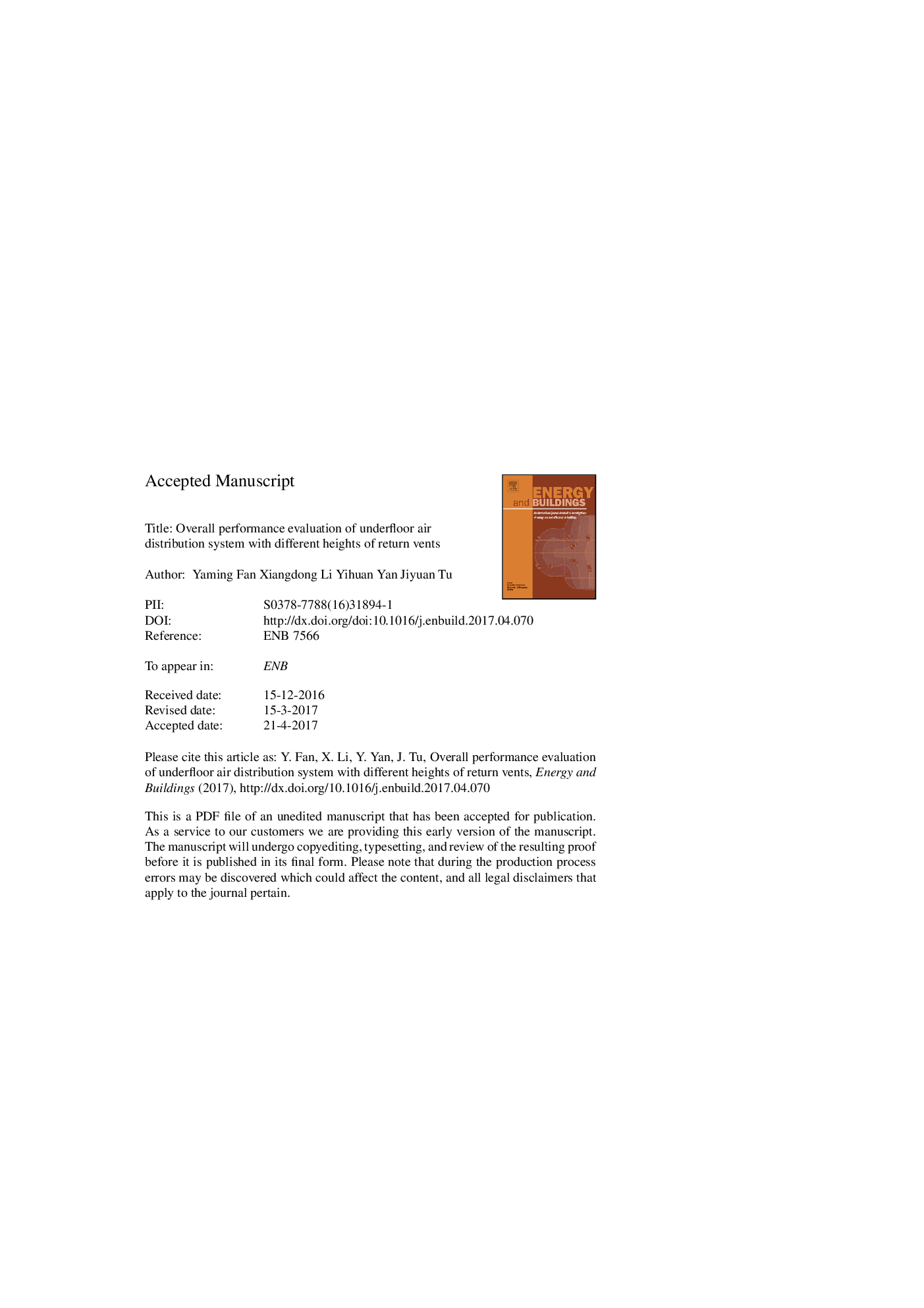| Article ID | Journal | Published Year | Pages | File Type |
|---|---|---|---|---|
| 4919157 | Energy and Buildings | 2017 | 41 Pages |
Abstract
In under-floor-air-distribution (UFAD) systems, the exhaust/return-split configuration is believed to be more promising than the exhaust/return-combined arrangement in terms of energy efficiency. However, how to properly position the return vents still remains an unanswered question when the thermal comfort and indoor air quality (IAQ) need to be simultaneously considered. In this study, a series of numerical computations are conducted with various height positions (ZÂ =Â 0.8Â m to 2.6Â m) of the return vents in order to evaluate the effects of the height of return vents in a UFAD system on the thermal comfort, contaminant removal and energy efficiency. The thermal environment indices (temperature gradient and draught rating), indoor air quality indices (mean age of air, air change efficiency, CO2 and TVOCs concentrations distribution) and energy saving are analyzed and compared against each other. The results demonstrate that descended return vents are beneficial to the energy efficiency, while the dispersion and removal of gaseous contaminants such as CO2 and TVOCs is highly sensitive to the location of return vent relative to the contaminant sources. An optimal range of location height of return vents which compromise all the aforementioned indices is recommended.
Related Topics
Physical Sciences and Engineering
Energy
Renewable Energy, Sustainability and the Environment
Authors
Yaming Fan, Xiangdong Li, Yihuan Yan, Jiyuan Tu,
